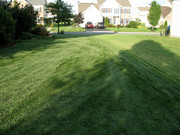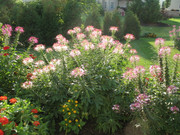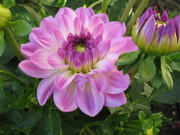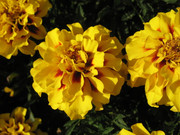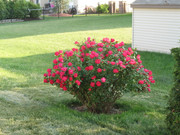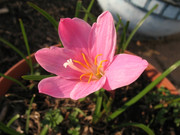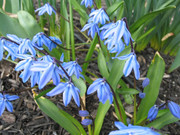I made my annual seed selections today for the 2013 gardening season. I noticed last year that cool-season plants did very poorly, and I ended up losing most of the Impatiens in the garden. While I may repeat them this year, I think I'll include fewer.
I tend to purchase the plants that I use in small numbers. Those include Impatiens (12 plants or so), petunia (3 or 4), and sometimes a flat of Janie gold marigolds as I can't get the seeds through my preferred suppliers. I use an overall total of 11 to 12 flats and grow 10 of them in the cellar on a light rack that I constructed (there are posts about that on this blog).
The plan this year is much the same as last year--a great deal of red, yellow, and orange, offset with blue. I liked the contrast and colors very much.
This year's list of plants is as follows. Heirloom plants are non-patented varieties where I collect seeds from the last year's plants and grow the next year from them.
Red Salvia, crossbred, heirloom seeds from the garden. These tend to get slightly taller and flower more heavily every year. Eventually I'll need to mix in some smaller varieties to reset the heights. Right now they're about 30 inches tall, typically have eight or so flower spikes at a time, and flower from May through frost.
Salvia farinacea, crossbred, heirloom. These don't seem to change much year to year.
Melampodium (butter daisy), crossbred, heirloom. These also seem to be getting taller and much more heavily blooming.
I purchased Double-Take Cosmos from Burpee this year as per spousal request. I have the perfect places for them! They're a gorgeous bi-color cosmos of moderate height. I've had excellent luck with Burpee seeds in the past.
I buy most of my seeds from Park Seed as I love the high quality and healthy plants I get.
This year, I bought from Park:
Easter Egg Plant: A neat accent for the garden. I'll plant six or so.
Harlequin Mix Dahlia: Another spousal request. I also love dahlia, so that's not an issue, and they work well in the garden. Their more nodding flowers and slightly more delicate colors make a nice resting place for the somewhat overwhelmed eye.
Mimulus, Red and Yellow Magic Blotch: A pretty and striking bi-color. Monkey Flower (Mimulus) does well in full sun in Pennsylvania but tolerates partial shade very well.
Dreamland Scarlet Zinnia, Dreamland Yellow Zinnia, Profusion Double Fire Zinnia: Both Dreamland and Profusion are relatively disease resistant. I had a little trouble with the red Magellan Zinnia, although the yellow did very well in my garden.
Janie Flame Marigold, Janie Primrose Yellow Marigold, and Aurora Gold Marigold: I've always loved Marigolds for their bold colors and constant bloom. Yes, they're common. There's a reason for that!



